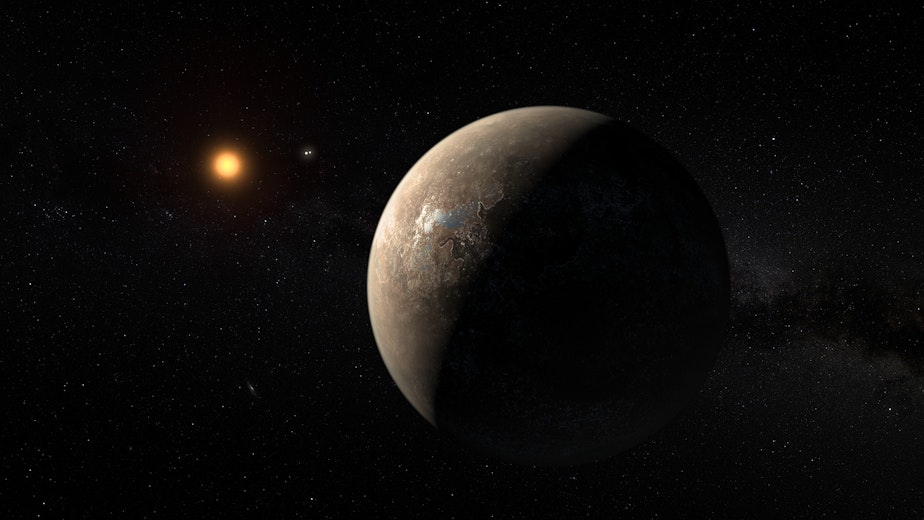Why the discovery of planet Proxima b is worth crying about

The discovery of a planet that could hold life just a few light-years away is enough to make Alan Boyle teary.
"When we look back millennia from now, we're not going to be so focused on who won such and such an election or who made the most money," the GeekWire aerospace editor told KUOW's Kim Malcolm. "People are going to remember big steps that were taken on the frontier, and this could be one of them."
There's a "nonzero" chance that the planet -- dubbed Proxima Centauri b -- could hold life, according to scientists involved in the Pale Red Dot project. They wrote about their findings in the journal Nature.
Proxima b orbits a red dwarf star in the Alpha Centauri system, about 4.2 light years from earth. (May not sound like a lot, but it's roughly 25 trillion miles.)
That distance makes it extremely difficult to say much for certain about this planet, Boyle said. (His story at GeekWire is here.)
Sponsored
We know the planet is more massive than earth and orbits very close to its star. But that star is much dimmer than our sun, and the combo make it possible that conditions for life exist.
Observing the planet directly is impossible with our technology now. Changes in the star's brightness show it is being affected by a planet's gravity, the scientists said. It took them 16 years to get enough evidence, Boyle said.
But what if there were a space telescope that could peer directly at Proxima b? A new one is scheduled for launch in 2018, Boyle said, though it's uncertain whether it'll be able to see the planet.
Another way would be to send out probes. The Breakthrough Starshot project aims to do just that, though its probes could take decades to reach Proxima b.
What role might Seattle's space industry play in learning more about the planet? Boyle thinks various major players -- Paul Allen, Nathan Myhrvold, Charles Simonyi, to name a few -- might be candidates to support such projects.
Sponsored
"Right now, things like the Breakthrough Starshot effort are mostly based in the Bay Area," Boyle said. "So we could have a little bit of a Seattle vs. Silicon Valley thing going on."
You can see simulations of the planet in this video from the European Southern Observatory:



